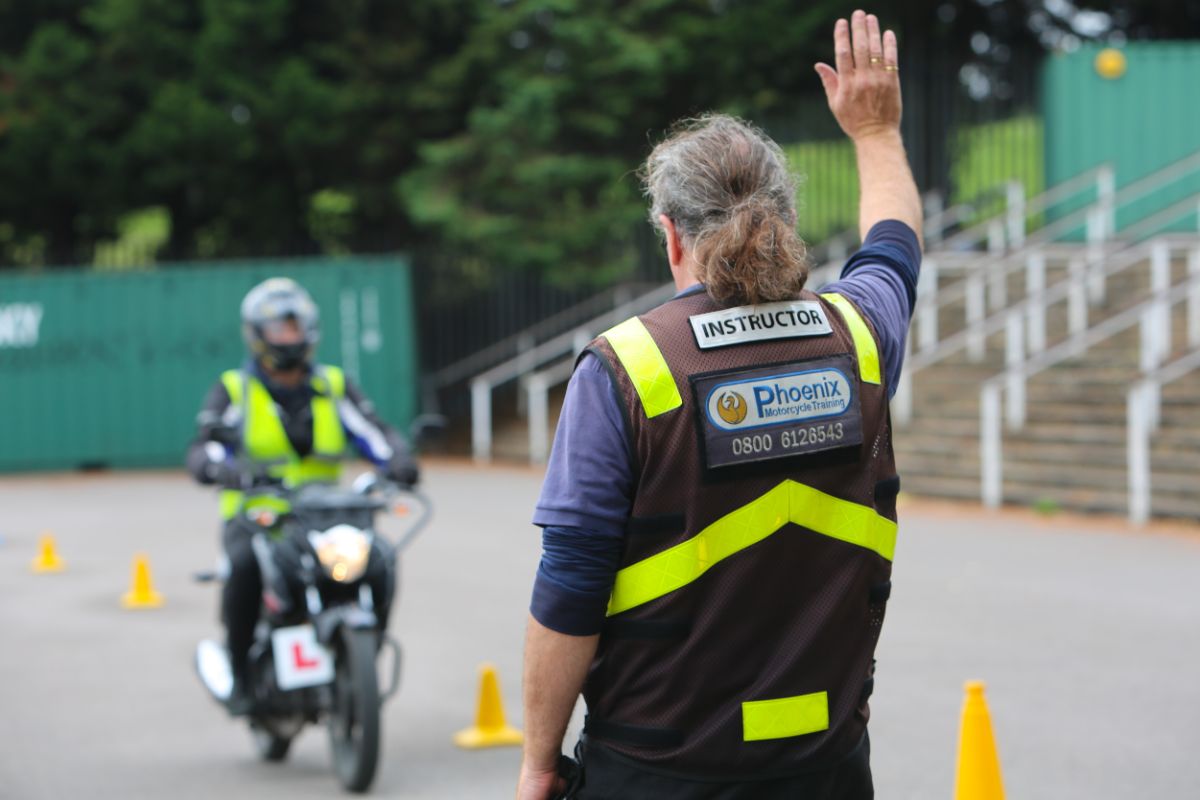We all love riding motorcycles, but we’re also very aware that when things go wrong, they usually do so very rapidly, and without warning. There are a multitude of things that can happen on the roads, and they all require slightly different response, but one skill that’s very handy to have in your toolbox for sudden hazards, is being able to do an effective emergency stop.
We quizzed Chris White from Phoenix Motorcycle Training, the UK’s largest motorcycle training provider, to find out how to execute a perfect emergency stop.
Before we get started, let’s just put a little caveat here: although the principles of emergency braking are largely universal, the most effective way to stop a motorbike depends on several variables such as bike geometry, equipment and load. For instance, a sportsbike or a hyper-naked with top-spec brakes, a solo rider and no luggage only needs the front brake as the rear wheel is barely in contact with the ground under heavy braking and offers little help. On the other hand, a fully-loaded tourer or cruiser with a passenger can benefit from using the front and rear brake together. So, in a nutshell, it all depends…
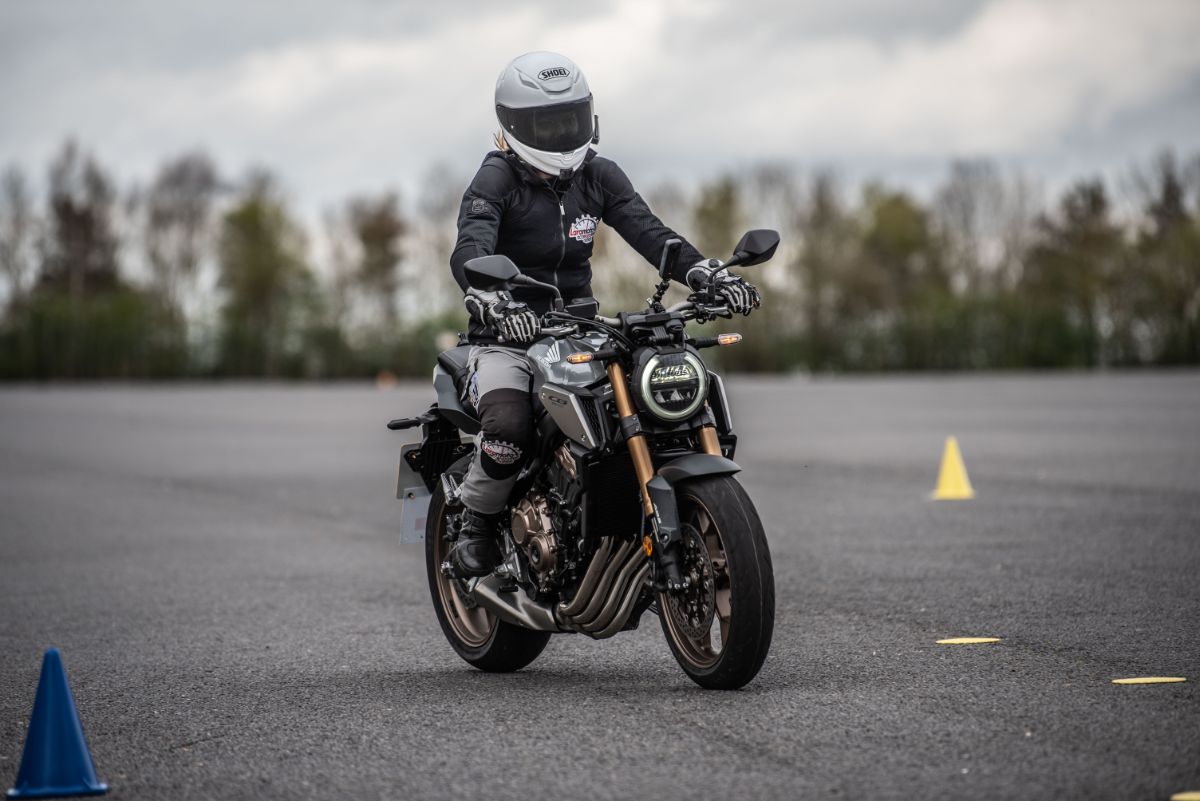
As with any riding skill, the key to getting emergency braking right is practice. The more you practice braking, the shorter the braking distance becomes. Seeing the improvement will also make you more confident, which helps you keep your cool when your skills are called into action. For practice, you need a safe place with enough room to complete the manoeuvres comfortably. One good way of doing that is to do what we did, and join a streetSKILLS 101 training day where you can practice the moves, and get accurate data about how you’re doing too.
So, what do you need to practice? Key to effective braking is to make sure your braking is gradual and progressive (don’t grab that front brake lever or stomp on the rear brake).
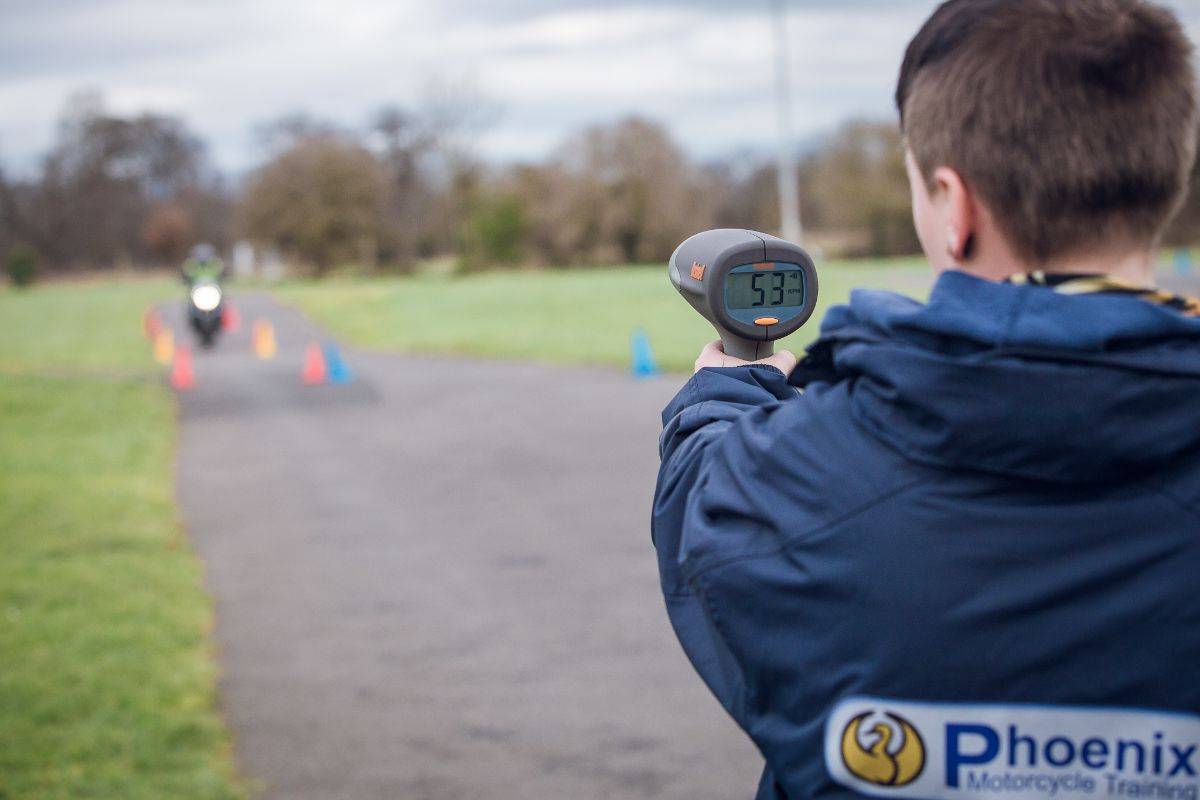
Apply the pressure to the brakes quickly, progressively and smoothly, first fairly gently to let the suspension compress, before adding more pressure as the tyre is pushed to towards the ground for more grip. The process is gradual, but needs to happen pretty quickly to be effective, so you need to practice applying the brakes as fast as you can safely do so.
A really good technique is:
- Throttle off
- Little bit of front brake
- Little bit of back brake
- Then load more, more, more on the front
- Clutch in
With the front suspension compressed, you can brake harder with the front brake, and you might be surprised how hard you can brake on a modern motorcycle, to the point where the rear wheel feels light or even lifts a little.
Although you need to brake hard to stop the bike quickly, you need to be careful not to lock the wheels and lose control. ABS systems on modern bikes can help with this, and if your bike has different levels of ABS to choose from it is important to set these correctly.
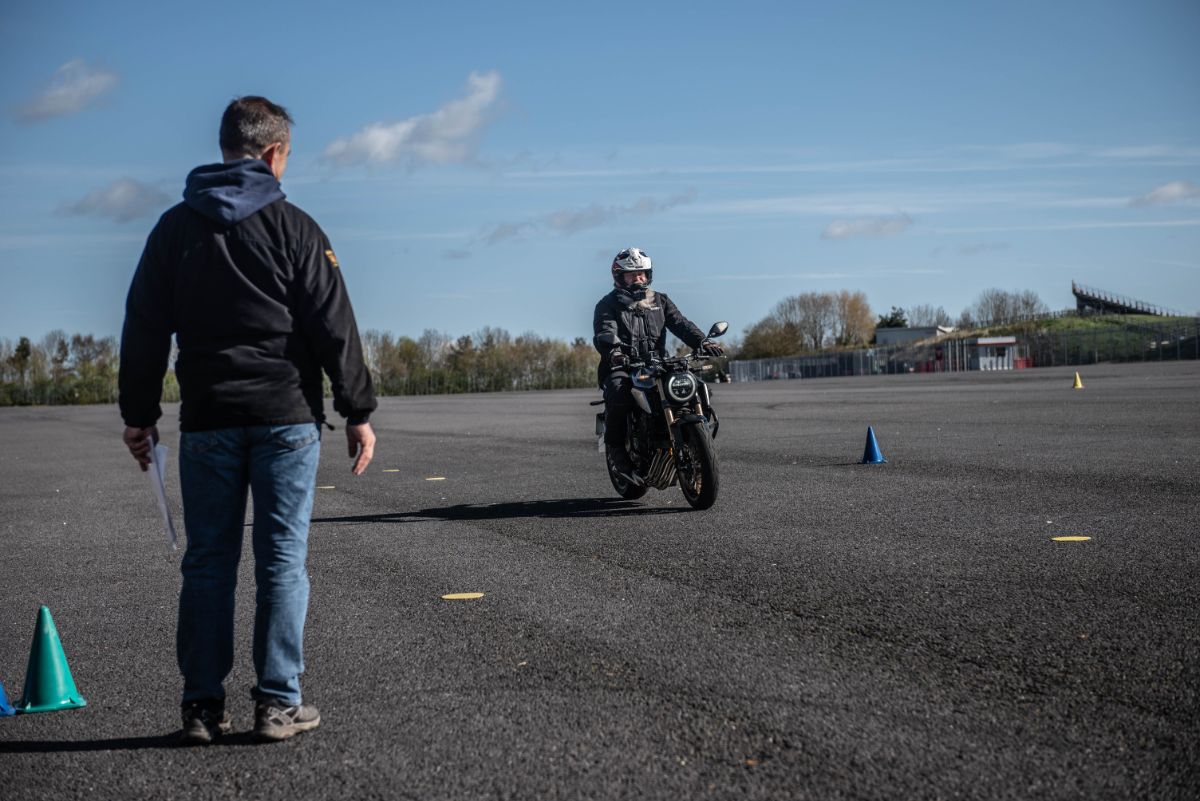
Once you have stopped, you may need to move again straight away, so as you are braking, you will also need to remember to shift down the gears and pull the clutch lever in to stop the bike from stalling as the speed reduces.
When you are braking hard, it’s human instinct to lean back, sit up, straighten your arms and grab hard on the handlebars. Try NOT to do that as it makes the bike more unstable. Instead, anchor yourself to the bike. Do this by gripping the fuel tank with your knees to keep yourself in place and to shift the weight transfer lower. This also lets you hold the handlebars with relaxed arms, giving you much more control.
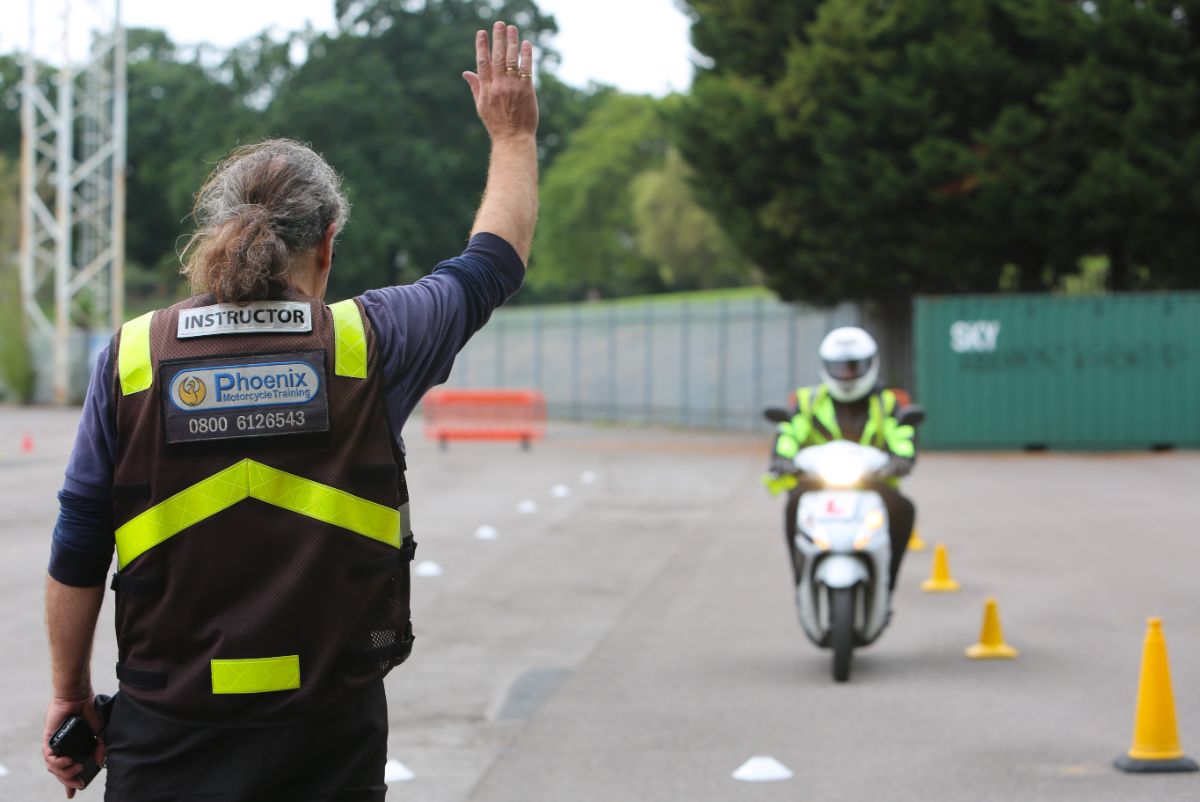
And one more thing; if all your energy is spent on stopping the bike quickly, it will be difficult to concentrate on your vision, but ideally you want to be looking further ahead (not the front wheel) to get a better idea of what’s happening and also to keep the bike more balanced.
And that’s pretty much emergency braking in a nutshell. Although, don’t forget that braking hard in a straight line is one thing, but doing it in a corner is a different situation altogether. But that deserves an article all of its own, and we will be looking at that in a future feature. For now, let’s just get that straight line braking sorted.
------------------


